Poisonous plants – 10 toxic plants to avoid growing on your property
Poisonous plants are a real risk to pets and kids, so learn to identify them and root them out of your yard

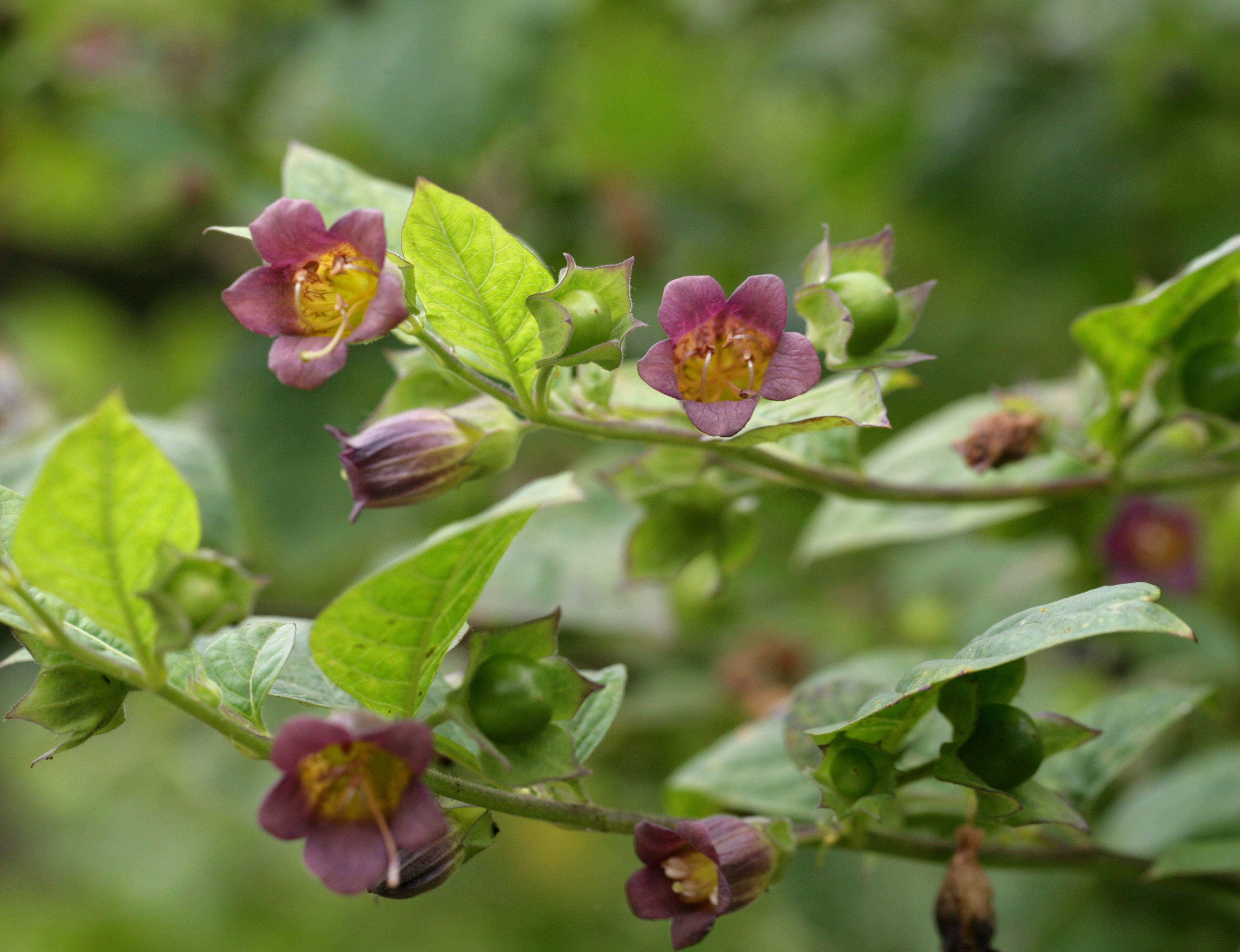
Poisonous plants are not always glaringly obvious. Yes, there are a few we know to avoid, but many have attractive flowers and foliage and we happily encourage them to grow in our backyards for their beauty.
But if you have a household with young and curious members or plant-chomping pets, it’s definitely worth knowing more about these beauties before deciding whether to cultivate them or not amongst your garden ideas.
We’ve put a list together of some of the most potent – but often less obvious – toxic plants so you can decide whether they’re the right ones to include in beds and borders.
Poisonous plants: what to avoid
Plants have long been used and valued for their medicinal and culinary qualities. Today many poisonous varieties are still used in small, carefully managed doses as a basis for essential everyday medication.
But even the smallest seed or section of root of some plants can prove fatal if eaten, or cause unpleasant effects, and if you have kids or companion animals, these are the poisonous plants you may want to avoid altogether.
1. Lily of the valley
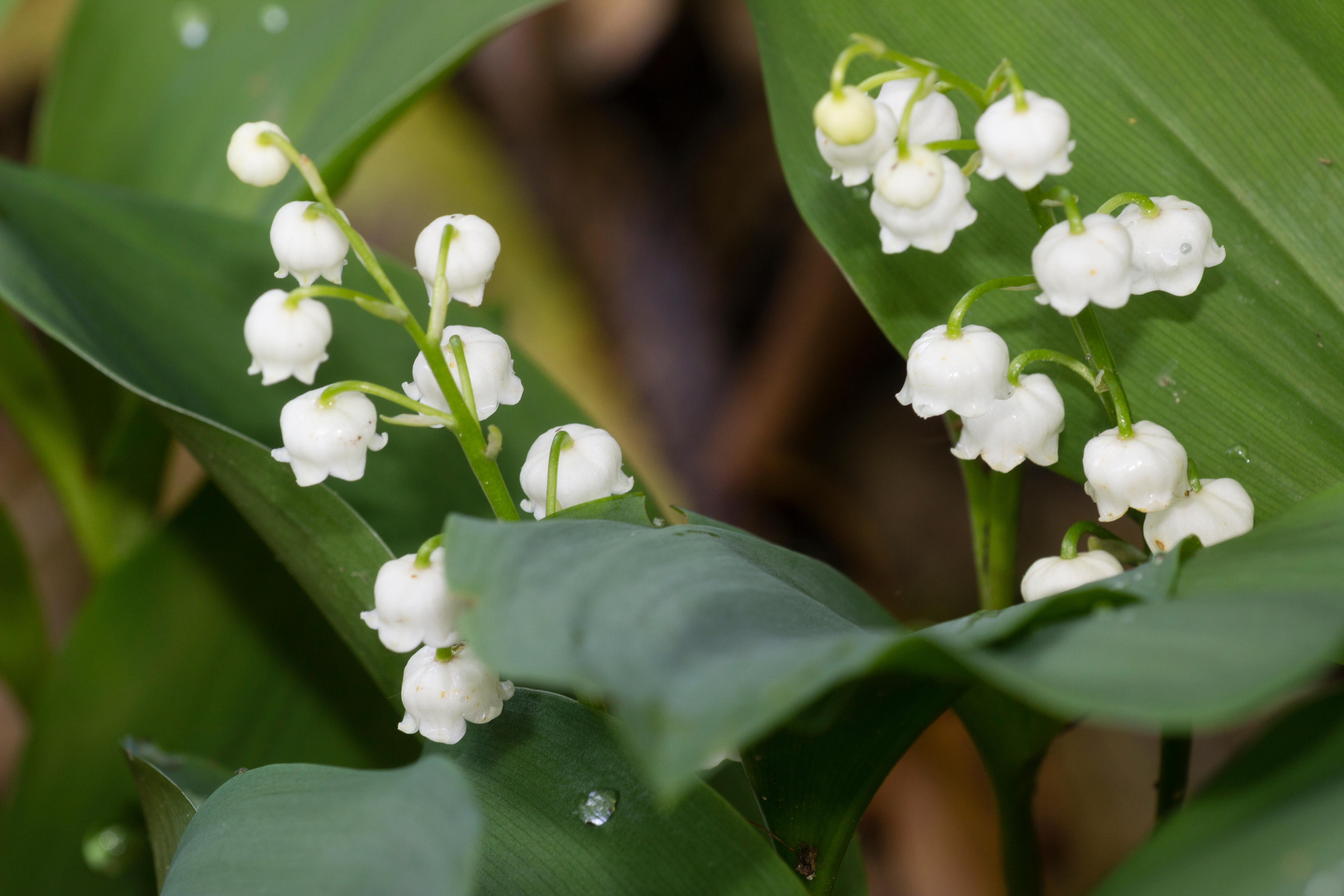
Known for their white, delicate bell flowers and super sweet scent, these delightful shade lovers are poisonous plants because they contain extremely toxic cardiac glycosides in their flowers, berries, leaves, and stems. Although not harmful when touched, they will cause blurry vision, headaches, drowsiness, disorientation, nausea, vomiting, diarrhea, skin rashes, and an irregular heartbeat if accidentally swallowed.
When considering how to grow lily of the valley, these plants tend to spread beneath trees and shrubs. They love both dry and damp shade making them very handy for ground cover. Their sword like foliage grows to 4 to 8 inches (10 to 20 cm) high and they produce attractive red seed pods after flowering. They do require a period of cool temperatures to enable the dormant plant to refuel but remain perennial in USDA zones 2 to 9.
Design expertise in your inbox – from inspiring decorating ideas and beautiful celebrity homes to practical gardening advice and shopping round-ups.
2. Foxgloves
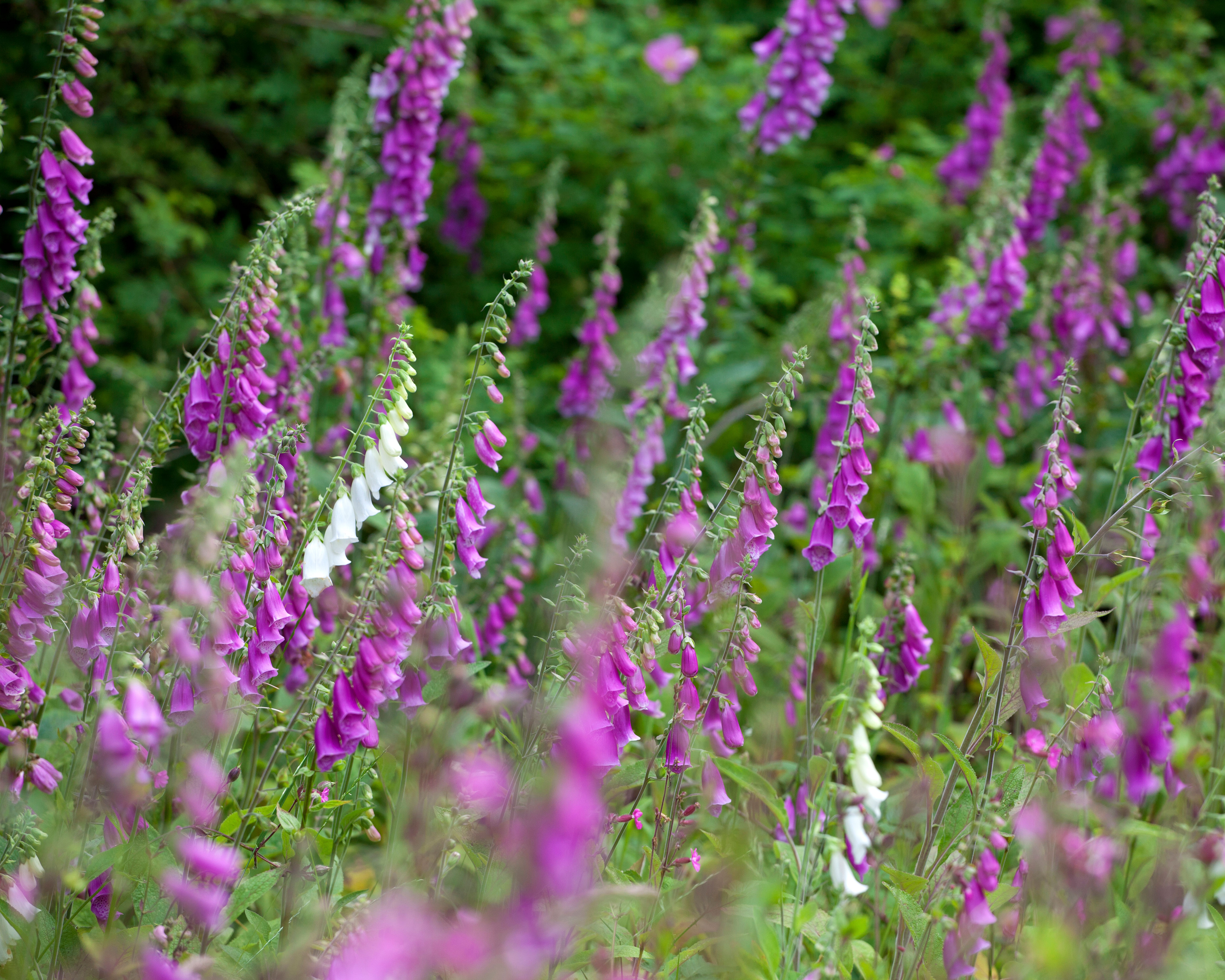
Grow foxgloves (Digitalis purpurea) and the towering spires of sumptuous pink and white trumpet blooms are a dazzling sight in early summer. Lovers of dappled shade and woodland, they are real favorites with hard-working pollinators and other native insects. Growing up to a stately 8ft (2.5m) they are perfect for adding height to a border or for lining up along a fence or pathway.
Although sublimely elegant these backyard treasures do harbor something of a dark secret. The whole plant is toxic, if eaten – from petals, seeds, leaves to roots – with the upper leaves taking just 20 minutes to release their poison, causing nausea and vomiting.
The NCPC (National Capital Poison Center) says, ’You might recognize “digitalis” as the name of a heart medicine... When formulated into a medication with a controlled dosage, digitalis is valuable in treating heart failure.’
The plant is a different matter. ‘People who eat any part of the plant or make tea from the leaves are, in essence, taking an unregulated dose of heart medicine,’ the NCPC warns. ‘This can cause the heart rate to slow down or become irregular. Both can be dangerous and life threatening.’
3. Oleander
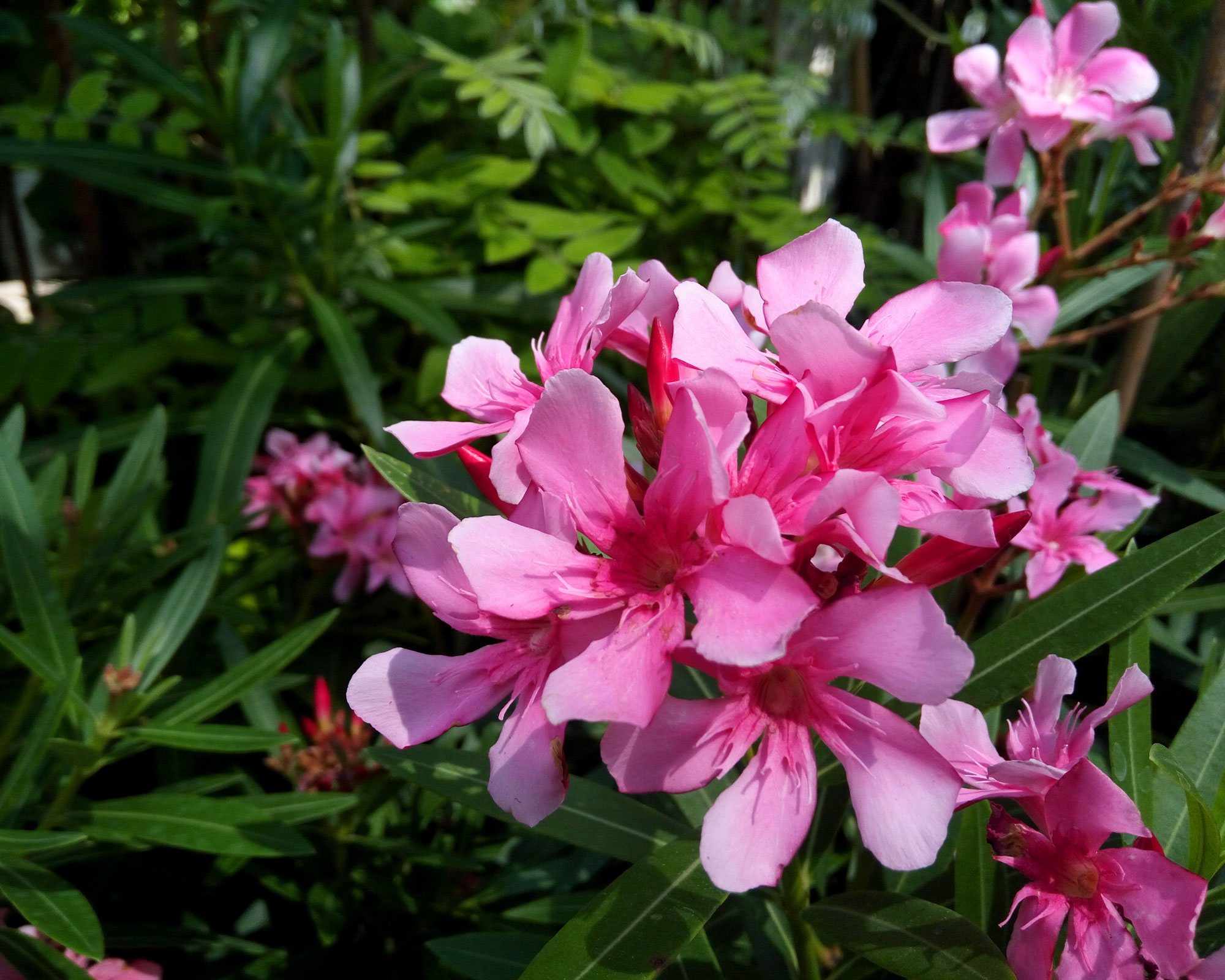
Sun loving and pretty tough, oleander with its decorative flowers in every color from white, yellow, pink through to deep burgundy is a favorite among Mediterranean plants. Thriving on neglect, they cope happily with poor soil, salty coastal air and acidic soil. High temperature and drought also pose little problem, making this the perfect choice for warmer southern climates from Florida to Southern California (USDA hardiness zones 8 to 11) but it’s worthwhile knowing that these are poisonous perennials with every part of this silver-leaved beauty highly toxic.
Just brushing past foliage can cause skin irritation, so do wear gloves and long sleeves when pruning, and wash hands thoroughly after. Digesting even the smallest amount can prove fatal to humans and animals, so carefully consider whether it’s worth growing it in your yard. According to the ASPCA (American Society for the Prevention of Cruelty to Animals) it is toxic to cats, dogs and horses and can cause abdominal pain, diarrhea, colic and death.
4. Deadly nightshade (belladonna)

OK, this is one plant that most people do know about, but you may not know that it is entirely safe for birds and animals to eat. Humans are not so lucky with this plant though, as its shiny black cherry-like berries contain a poison that when digested causes pupil dilation, convulsions and raised heart rate before paralyzing the gastrointestinal muscles and eventually the heart. The RHS (Royal Horticultural Society) says, ‘Even rubbing up against it can cause irritation to the skin.’ So, knowing how to remove deadly nightshade is important, particularly if you have small children playing in the yard.
Sporting purple-brown, bell-shaped flowers in June to September, these bushy perennials grow up to 3ft (1m) in USDA zones 6 to 9 and thrive on chalky soil. With oval-shaped, ribbed green leaves these plants are not usually cultivated in gardens but can appear, particularly where soil has been recently disturbed or dug over.
5. Water hemlock
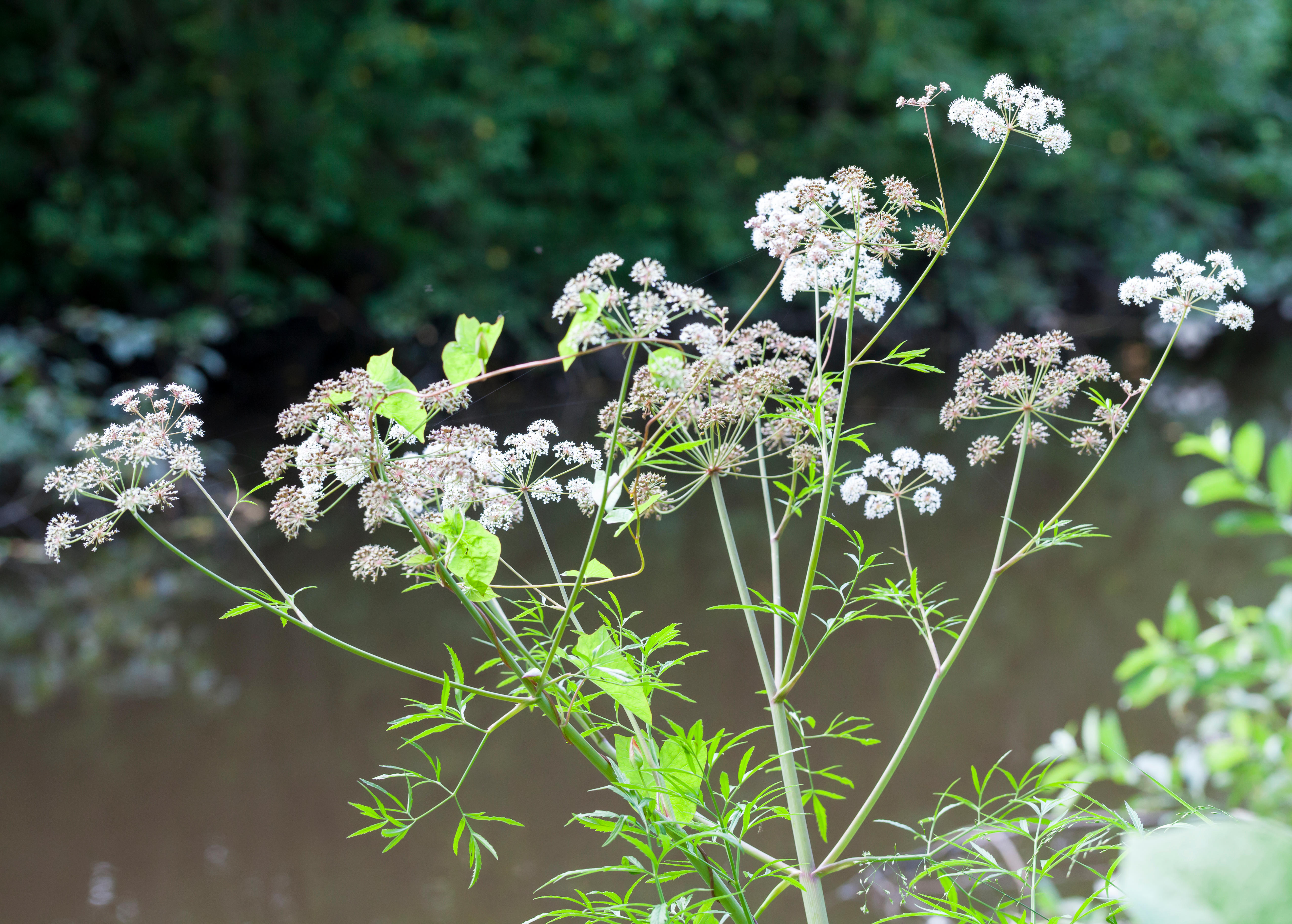
Growing up to 8ft (2.4m) tall, this plant really is a deadly giant. Not be confused with the cow parsley – the tiny white flowers arranged in umbels are very similar – it can prove fatal to animals and humans alike. The entire plant from its green seed heads to leaves and fleshy stem harbors a toxic sap containing cicutoxin, which attacks the central nervous system. Causing violent convulsions and acute stomach pain within an hour of eating, it can quickly prove fatal.
It’s generally found thriving on the edge of ponds, along streams and in moist meadowland, and USDA advises, ‘cicutoxin, is a highly poisonous unsaturated alcohol that has a strong carrot-like odor. It is found principally in the tubers but is also present in the leaves and stems during early growth. Leaves and stems lose most of their toxicity as they mature; however, green seed heads are poisonous.’
6. Castor oil plant
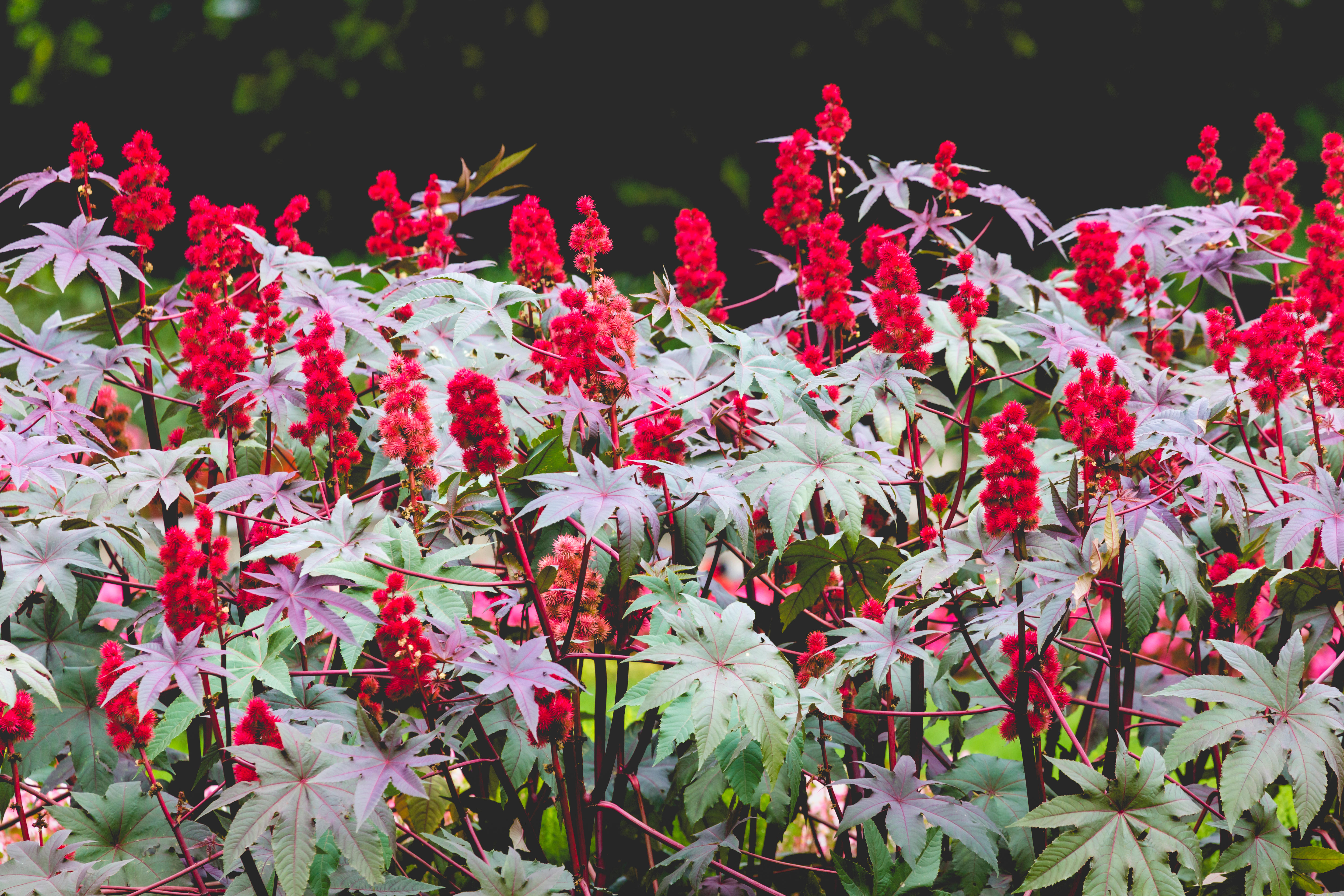
Did you know that just one tiny seed of the stunning castor oil plant can kill? Yes, the dramatic foliage plant with deeply lobed, bronze-red leaves contains one of the most poisonous natural substances: ricin. If chewed, the chemical is released causing chronic dehydration and a reduced heart rate, leading to death in three to five days.
An ornamental houseplant or annual garden plant in the southern states (USDA hardiness zones 2 to 9), it can reach up to 15ft (4.5m) and is often grown for its distinctive architectural form and showstopping color. If you do choose to grow this plant, be sure to remove flower buds as they form to prevent the plant from setting seed. Brushing against or handling the leaves can also cause skin irritation. Be sure to wear gloves and wash hands thoroughly after coming into contact with it.
7. Rhubarb
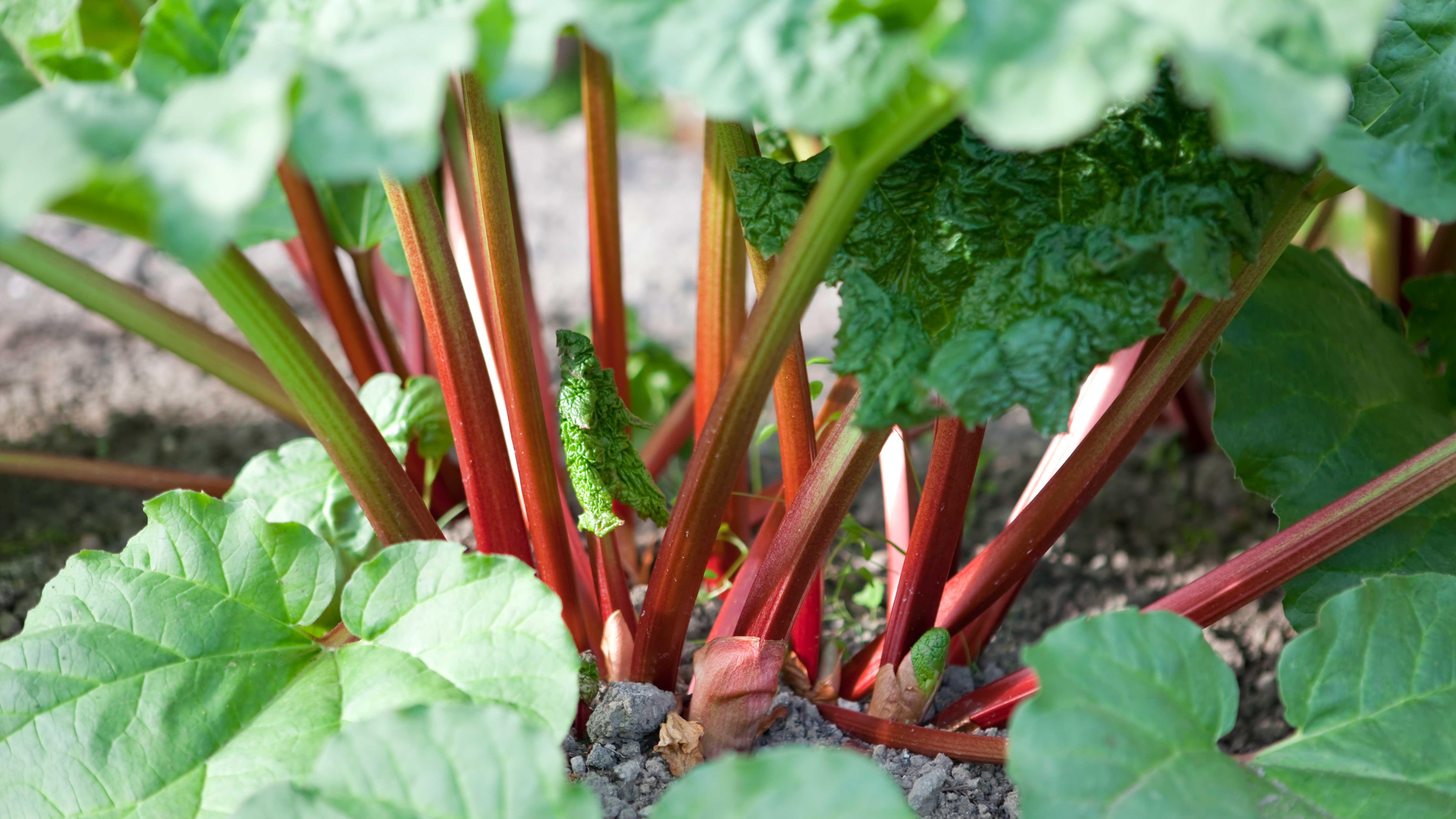
Fast growing, with impressive, pink-colored stems and huge leaves, growing rhubarb is popular among vegetable garden ideas. Requiring little care and attention it can grow up to 23in (60cm) tall in a matter of weeks and the stems are delicious stewed and added to sweet pies and desserts.
There is much controversy though about eating the leaves, with a wide held belief that they are poisonous. The truth is, that along with many other fruits, vegetables, nuts and seeds, rhubarb contains oxalic acid, with the leaves having a particularly high concentration.
Although eating one portion is very unlikely to have any deleterious effect, accumulating too much oxalate in the body can lead to painful kidney stones developing and, in extreme cases, possible kidney failure.
8. Chinese wisteria
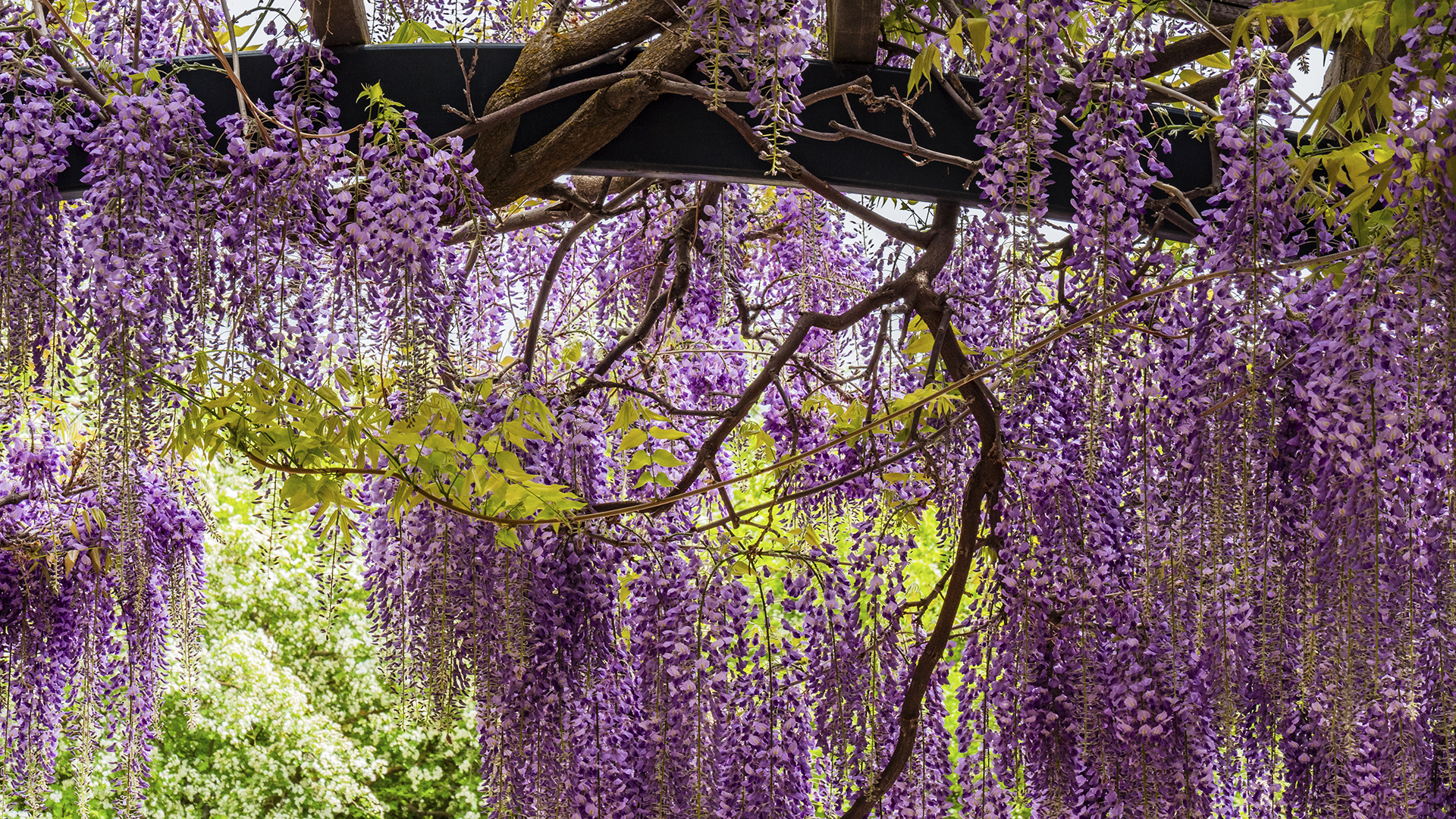
Swathed in beautiful sprays of blue and lilac blooms throughout early summer, you’d think there was nothing threatening about choosing dreamy Chinese wisteria (Wisteria sinesis) when growing wisteria, but you would be wrong. A hugely popular climbing plant that twines its way around pergolas, along fences and over arches, its plentiful seeds are actually toxic to dogs, cats and horses.
Encased in enticing, velvety pods the brown-black round seeds contain lectin and wisterin, two chemicals that cause burning in the mouth and severe stomach upsets. Think carefully before introducing this ornamental to your backyard if you have small free-range furries at home, as once established it can be tricky to deadhead and remove all the seedpods. Bear in mind, too, that it makes our list of invasive plants and is banned in some states.
Commonly found in plant hardiness zones 4 to 9.
9. Azalea and rhododendron
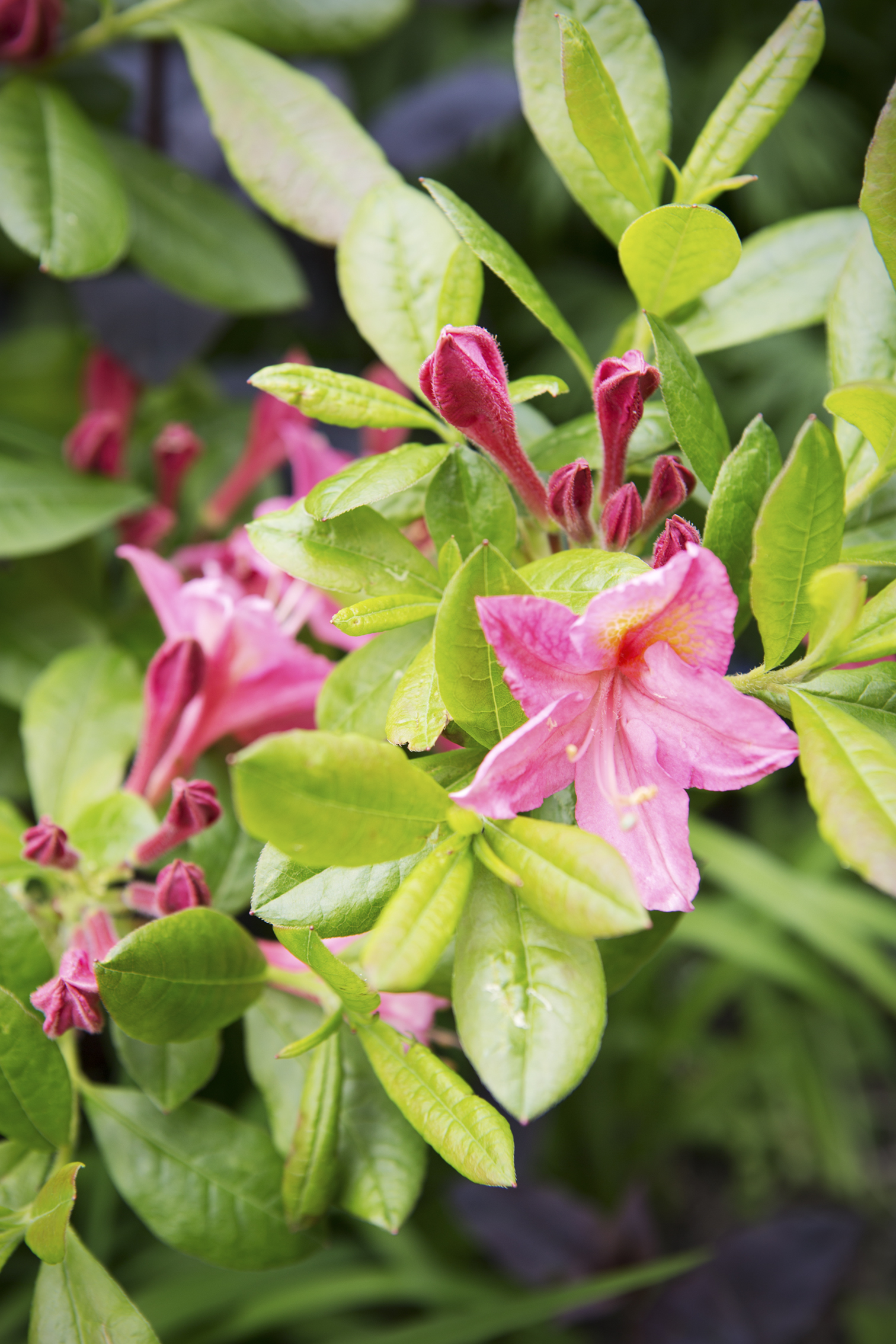
The technicolor floral fireworks of azalea and rhododendron light up many backyards in early summer and fall, and these hugely popular flowering shrubs are hardy throughout USDA zones 4 to 8. But it may be a surprise to learn that the entire plant is highly poisonous tree.
They can cause severe sickness in dogs, cats and horses and the ASPCA says, ‘Ingestion of a few leaves can cause serious problems. Clinical effects typically occur within a few hours after ingestion and can include acute digestive upset.’
When it comes to humans, rhododendrons are no more palatable. The first reported chemical weapons, they were the nectar source for ‘mad honey’, the toxic honey used by Turkish royalty in 65BCE to stupefy the invading Roman army, leading to their easy slaughter. Eating any part of the plant can lead to severe breathing issues, paralysis, coma and death.
10. Yew

If you are looking for a dense evergreen plant to grow as a hedge or topiary, then English yew (Taxus baccata) is a fantastic choice. With its small dark green leaves and bright red berries adored by birds it can be clipped into shape to create a bold statement that also acts as the perfect backdrop for showcasing other plants. Thriving in most soil types and positions it’s a tough, long lived specimen that is hardy in zones 5 to 7.
Yew is steeped in dark and morbid folklore. According to the Woodland Trust, it was referred to as the ‘tree of death’. The Romans believed that yews grew in hell and there’s evidence in the UK that they were planted on the mass graves of plague victims to purify the dead. It should be no surprise to then learn that the entire plant – apart from the red fleshy berry encasing the seed – is extremely toxic to people and animals. Just a few leaves are enough to kill a small child and at the very least it can cause convulsions and paralysis.
The Canada or Canandian yew (Taxus canadensis), also referred to as the American yew, meanwhile, is also one of the poisonous plants to look out for as all parts, save the flesh of the fruit, are toxic.
How can I avoid contact with toxic garden plants?
Common sense prevails when it comes to minimizing the risk with poisonous plants and the RHS sums up with a few key pointers:
- If it is not a food plant, do not eat it.
- Teach children not to play with or eat growing plants.
- Use gloves when pruning or weeding and keep skin covered.
- Do not leave prunings or uprooted plants in reach of farm animals or pets.
- Check plant labels for toxicity warnings (sometimes stated on label)..
How can you tell if a plant is poisonous?
While there is no definitive way to tell that a plant is poisonous by observation, there are a few signs that can help you identify potentially toxic plants.
The signs for possible poison plants are:
- Milky sap
- Naturally shiny leaves
- Plants that have yellow or white berries
- Umbrella-shaped plants

Journalist Jill Morgan has spent over 20 years writing and editing gardening, interior and property features. Titles she has worked on include The English Home, House Beautiful, Ideal Home, Houzz and Modern Gardens and she writes regularly for H&G as a Contributing Editor. Whilst she is a dab hand at renovation projects and DIY, she is happiest when out digging in the garden or planning a new border.